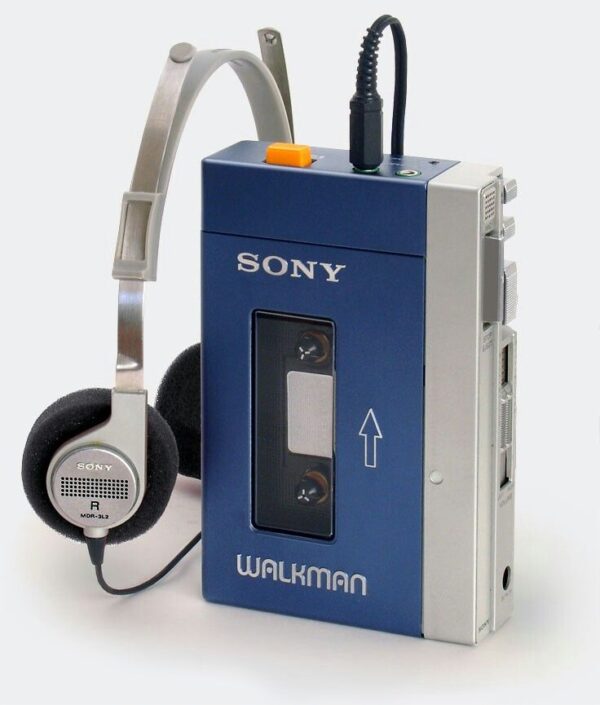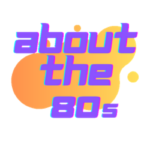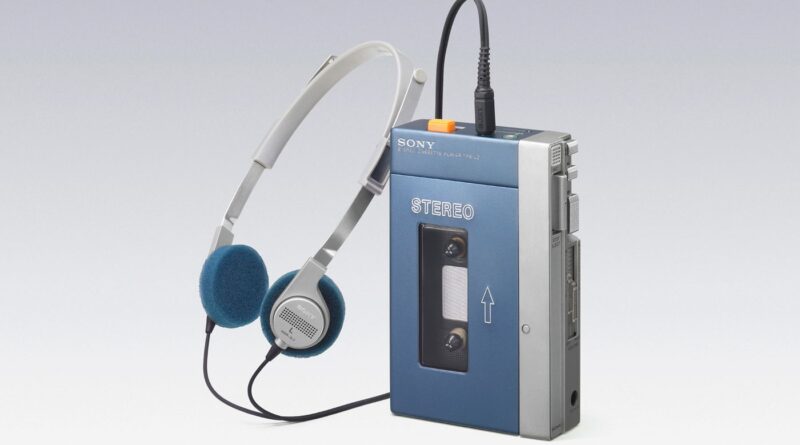17 Advanced Technology Gadgets in the 80s
When you think of the 80s, what comes to mind? Arcades? Big hair and neon clothes? As my favorite era, the 80s offered so much more than crazy clothing and arcade games. Everything from the rebellious teenager to rock n’ roll to the cars, but the gadgets then were considered to the basis for the most impressive technology we use today. In fact, the 80s is known for its significant tech contributions to the future, such as the following:
- Nintendo Gameboy and NES
- Sony Walkman
- Trinitron TV
- VHS or Video Home System
- Apple Macintosh computer
- Casio Keyboard
If you’re into Apple products or video games, you’ve got the 80s era to thank because it all started here! There’s so much we use nowadays that we don’t give two thoughts about when and where it started. So here’s a list of the advanced technology used in the 80s, basic as they may be now, they blew the world away back then.
Most Advanced Technology in the 80s
1. Nintendo Entertainment System (NES)
Released in the US in 1985, the Nintendo Entertainment System, or the NES for short, was originally released as the Family Computer (Famicom) in Japan. The US version was also known to have save the home console industry which had almost gone down the toilet at the time. Few were aware that Nintendo was also teaming up with Atari to release the Famicom in the US known as the “Nintendo Advanced Video Gaming System”, but it fell through.
The “Famicom” was actually given a western makeover, debuting in the US with almost 17 games, including Super Marios Bros.,The Legend of Zelda, Millipede, Galaga and Space Invaders were among the first to be introduced. The operation was a wild success with 60 million consoles and 500 million games sold worldwide.
2. Apple Macintosh or Macintosh 128K
Originally released as the Apple Macintosh on January 24, 1984 by Steve Jobs at the Flint Center on De Anza College campus, this was the very first personal computer to be introduced by the company. He explained to the world how to make a mass-market personal computer.
The computer had a 9-inch monochrome display and came with a keyboard and mouse and was also the first computer to bring GUIs, or graphical user interfaces to the world. The Apple Macintosh had two serial ports with one 3.5-inch floppy disc.
At first, the Macintosh sold 70,000 units in the first year, priced at $2,495, which is equal to about $6,000 today. Then it was replaced by the Macintosh 512K with more RAM in September 1984. Pushing strong for the sales of the new computer, Jobs gave it everything he had to get these machines into American homes. Ridley Scott also directed the big 1984 Super Bowl commercial, which cost Apple $1.5 million to make the brand a world class name.
3. The Commodore Computer
The Commodore Computer, also known as the C64 is an 8-bit home computer that was released in January 1982 by Commodore Intonational. It was listed in the Guinness World Records as the highest-selling single computer model of all time, which reached about 15 million units. Production started in early 1982, marketing in the US for $595, which is about $1,600 today.
The Commodore 64 was preceded by the Commodore VIC-20 and Commodore PET, and got its name from its 64 kilobytes of RAM. Part of what made it popular was its color display and audio output, thanks to the multicolor sprites and custom chip for waveform generation, the basis of what we use in today’s gadgets.
Ultimately, the C64 dominated the low-end computer marketing (with the exception of the UK and Japan) for most of the late 80s, owning between 30-40% share of the US market and two million units sold each year. It outsold the Atari 8-bit family of computer, IBM PC compatibles and Apple computers. Another popular insights was that it was sold in regular retail stores instead of just electronics or computer stores.
For more info, I’d highly recommend to check out my blog on the Commodore 64 computer.
3. The Gameboy
The Nintendo Gameboy was released in 1989, just before the Nintendo 90s surge with the Nintendo 64. It wasn’t the first handheld game console, but it was the most popular by far. It had a chunky gray design with a monochrome display and supported different cartridges. During its original pitch, Nintendo promised it had an amazing 30 hours of battery life and due to its small size, it’s was easy to fit in your pocket.
The Gameboy was also similar to the NES controller with four buttons and an eight-way D-pad controller, which made it easier to play games. It also allowed for up to 16 people to hook up through a cable and play multiplayer. Altogether, these games combined with Tetris as one of the launch games made the Game Boy an immediate success in the US.
The original Game Boy sold at $90, although it strongly competed with Sega, nevertheless, it sold over one million during the first holiday season. Over its lifetime, it sold about 120 million units worldwide before it was succeeded by the Game Boy Color in 1998.

4. Sony Walkman
You might as well call the Sony Walkman the iPod of the 80s. It was actually released on July 1, 1979, but it was crazy popular throughout the 80s. The first version was known as the Walkman TPS—L2, which was a mini portable cassette player with two headset jacks and silver buttons. This ultimately changed the way people listened to music. Almost immediately after its release, it became one of the most successful gadgets in not only the 80s, but ever.
Since then, it released various versions before it was ultimately replaced by its own portable cassette player and Apple’s iPod. But if you ask anyone born in the 70s or 80s, they will most likely recognize the Walkman.
The cassette-based Walkman line was ultimately shut down in 2010, however, digital walkmans are still sold today. In fact, the fanciest Sony Walkman costs $3,199, but it targets audiophiles. Overall, Sony sold over 400 million Walkman players worldwide wince the release of the TPS-L2 model.
5. Casio Keyboard
Released in 1980, the Casio keyboard remains one of the most popular electronic musical keyboards today. Another masterpiece introduced in the 80s! These babies were used by most iconic artists, including Journey, Van Halen, Billy Idol, Cyndi Lauper, Madonna and so many more.
The very first model was the Casiotone, or CT, and had full-sized keys. Other models introduced would vary in key sizes and pitches, such as the MT, PT, VL, LK and S series. Nevertheless, most had feature automated accompaniment sections with drums, harmonies, bass and chords. They could also be run on both electric and battery power as well as could be integrated into other audio equipment like cassette decks and AM/FM radios.
Throughout the 80s and 90s, sound engineers and electronic musicians produced an authentic lo-fi sound and some could extend their sound palette by circuit bending. You might also want to check out my other article on the Casio Keyboard for more info and songs played with this gadget.
6. Casio Calculator Watch
In addition to the keyboard, the Casio calculator watch, or the Casio CA-53W-1, was crazy popular in the 80s, largely due to the built-in calculator. This was also one of the most progressive watches on the market in the 80s, with the ability to store names, numbers, contact info and so much more, all on a tiny watch.
The Databank series also modernized the watch market, which is something Apple is working on with the Apple Watch. The ability to wear a calculator on your wrist was considered to be one of the greatest technological advances at the time, which was also an insight into the ability to do more things on your wrist. Even to this day, Casio still sells calculator watches. For example, the AE-1500-WH-1AVCF offers a stopwatch, LED backlight, wide face, countdown timer, auto-calendar and a 10-year battery. With 100 meters of water resistance, the watch costs a measly $26.
7. VHS Player
Almost every home in the 80s had a VHS player. The videocassette recorder was also a major tech advance as it allowed users to record their favorite TV shows and watch them on their own time. No more coordinating your schedule around your favorite show!
But as soon as Hollywood stopped releasing movies on the VHS and transitioned to DVDs, the hype died during the 90s. While it’s been some time since the popularity of the VHS, it will never be forgotten. But thanks to VHS tapes, we’ve made huge strides in the media world as the hardware format has all but been eliminated as we can easily stream content on our own smart TVs.

8. Atari
While the Atari 2600 was first released in 1972 under the original Atari, Inc. name in Sunnyvale, CA by Nolan Bushnell and Ted Dabney, the company was considered to be a pioneer in arcade games, home video games and home computers. Their very first products were Pong and the Atari 2600, which helped to solidify the new electronic entertainment industry from the 80s to the mid 80s.
Due to the major crash of the video games in 1983, the original company was sold off and renamed Atari games Inc.. This new company received the rights to use the logo and brand name with appended text “Games” on arcade games and the rights to the original 1972-84 hardware games.
But what’s most significant to remember from the Atari was that it was used to shape the home console market during the 70s and 80s, especially with the release of Pong.
9. TVs
How could I ever forget to mention the beautiful box TVs that were in almost every 80s home as they just started to become affordable for everyone. Numerous companies had made them, including Baird - the very first company to make them in 1926 - Fidelity Radio, Funai, Vestel, Videocon, General Electronics and of course, Sony to name just a few.
In fact, Sony dominated a number of markets during the 80s, including TVs and the portable cassette player, Japanese economy was booming with the influx of new technology. In fact, if you owned a Trinitron TV, it was considered prestige in North America and Europe. This fancy and stylish TV set used superior CRT technology which made it a household name in the western world.
In fact, it was so popular that wealthy Indians would fly to Singapore or Hong Kong just to buy the TV set. Its picture was so good that Sony started to license its CRT technology to computer companies like Apple and Dell. But during the 90s, flat-screen displays took over and ultimately replaced the box set. Since it was first introduced in 1965, Sony sold 280 million Trinitron units, but was shut down 2008 once the CRT technology became outdated.
10. Motorola MicroTAC
This new flip phone was a major advance since the release of the traditional brick design of cell phones. The Motorola MicroTAC was released in 1989 and retailed for a crazy $3,000 for a Total Area Coverage given its dependence on long distance analog signals.
Just above the 12-button keypad was an 8-character dot matrix display, with two volume buttons on the side and a built-in mouthpiece and ringer. This fascinating piece of equipment would serve as the basis of future models, like the Motorola Razr.
11. Pagers
Speaking of phones, might as well throw in the classic pager, also known as the beeper. Before the breakthrough of text messages, you had a convenient little pocket bell to notify you if someone needed to reach you. There were both one-way pagers which can only receive messages and response pagers or two-way pagers that could acknowledge, reply to and originate messages using its internal transmitter.
While pagers were certainly popular in the 80s, they were initially developed in the 50s and 60s. But as the availability of cell phones became more apparent during the 80s, the pagers grew more popular. Eventually, giant cellphone manufacturer Motorola caught on and came up with the idea to release them together as smartphones, with a smaller design and the ability to send text messages instead of just beeping phone numbers.
But pagers still haven’t been phased out completely as they continue to be used by some emergency services and public safety personnel. Modern pager systems’ coverage can overlap as well as use satellite communications, so they are deemed more reliable than regular cellphone networks, especially in critical situations like natural and man-made disasters.
12. Epson ET-10
Tech companies caught on early that pocket technology was growing and continues to be critical today, the 80s were all about it. Major manufacturer Epson then jumped on the bandwagon to release the ET-10, also known as the Epson Elf - the world’s first TV with a liquid color display that fit in your pocket.
Released in August 1984, the ET-10’s 2 inch display was considered groundbreaking as it looked just like a portable radio, complete with an antenna on top!
13. Polaroid Camera
Why choose any other camera when you could have the picture immediately printed out after you took it? This was considered a major breakthrough in camera technology as the Polaroid 600 series, the Autofocus 660 had an 116mm lens and was the first to use the Sonar Autofocus technology. This technology used sensors to locate the distance between the subject and the camera, also using sonar pulses to develop an accurate autofocus shot.
But with continuous improvement, digital cameras took over as you no longer had to look through a lens to take your picture. And you didn’t have to run to the store to have the film developed; you could simply print them at home or keep them on your personal computer.
14. Boombox
Again there was no specific manufacturer that owned a big market share, but these babies were everywhere in the 80s. They were considered not only trendy but also a major fashion statement as they were carried around by young attention seekers.
Playing at the park, beach, along the sidewalk, walking path and at the gym, there were so many places to take these honking speakers. Despite their size and lack of convenience, the young Gen Xers didn’t seem to care as they carried them with ease blasting their favorite tunes.
15. The Clapper
This was one of the coolest, simpler gadgets from the 80s. Simply plug it into a wall socket and you could turn devices and lights on and off with a simple hand clap.
Although it had its issues, activating with loud noises, TV background noise and dogs barking. While it’s still used today and considered nifty, it’s not as great as other smart home gadgets like the Amazon Alexa, Google Home or Nest.
16. Speak and Spell
Every time I see this I’m reminded by the creepy toy on Poltergeist III where Carol Anne plays with it while walking down the hall. Nevertheless, it was one of the world’s first handheld PCs and game consoles, developed by Texas Instruments and introduced during the 1978 Consumer Electronic Shows.
Its visual display was one of its best features, using interchangeable cartridges to allow kids to play various games that focused on helping them to improve their spelling and vocabulary. It was considered one of the iconic toys of the 80s until 1992 when it released its final model. But this technology breakthrough was the first single-chip micro controller and speech synthesizer to pave the way for numerous gadgets we use today, including Alexa, Google and Siri.
17. Simon Game
The Simon game was one of my favorites as a kid and is still sold today. This was named after the original Simon Says game with a simple objective, repeat the pattern of the colored panels and tones. Due to its simplicity and mind stimulating features, like the Rubik’s Cube, this was a pop culture icon of the 80s that also withstood the test of time as it remains popular today.
Technological Advancements
It’s just amazing how closely these are related to current gadgets today like the Nintendo Gameboy evolving into the Switch, the Walkman and cellphone evolving into smart phones and the Commodore 64 and Apple Macintontosh 128K evolving into laptops and Macbooks.
While we may not have relied on them to the extent we do modern technology today, it’s amazing to look back at the most basic models and see how they have developed over time. The use of the microchips, VHS tapes, cassettes and floppy disks have all helped manufacturers analyze consumer trends and build on current technology to release the next major breakthrough.
Can you imagine what will be developed in the future as manufacturers continue to study our consumer behavior to determine what’s working well and what isn’t to develop the next major gadget? It’s incredible to think about!
Which Gadgets Did You Use?
So before the days of social media, smart phones and smart TVs, which of these gadgets did you use or feel you couldn’t live without? I certainly played a lot of the Gameboy and early versions of the Macintosh, but of course it doesn’t even compare to the extent to which I depend on my computer today. Let me know your thoughts and/or what you used back in the day in the comments below! I look forward to reading it!



